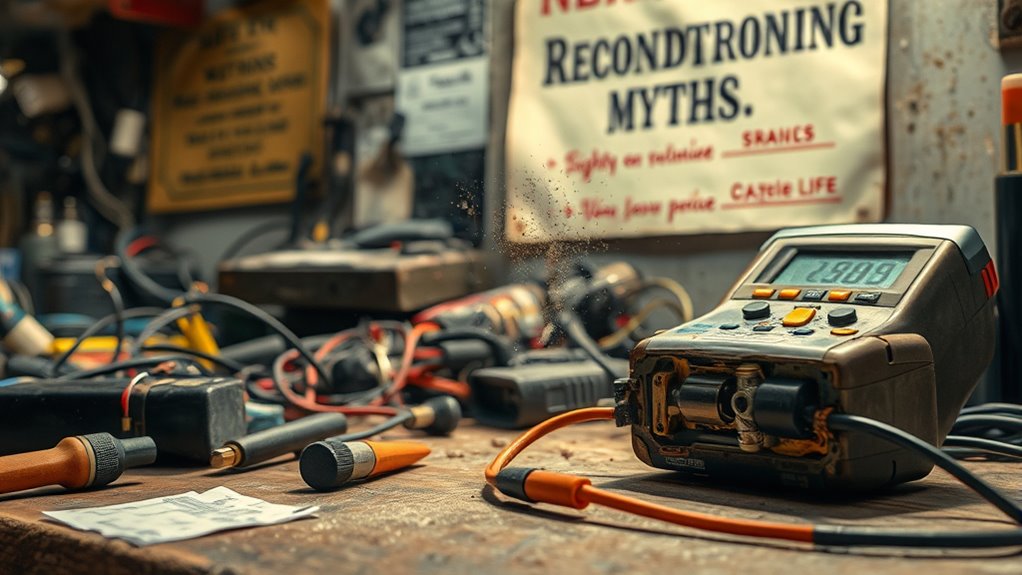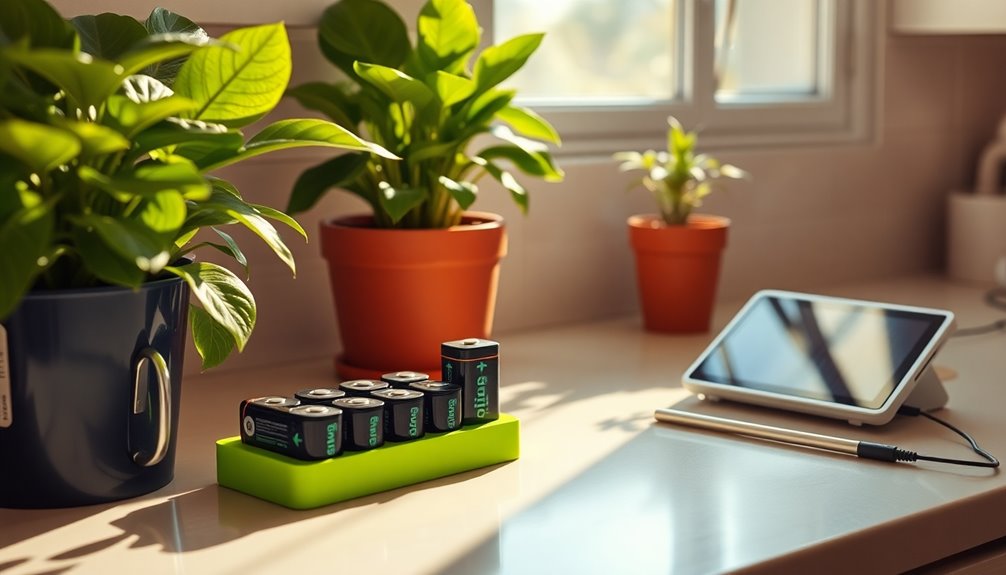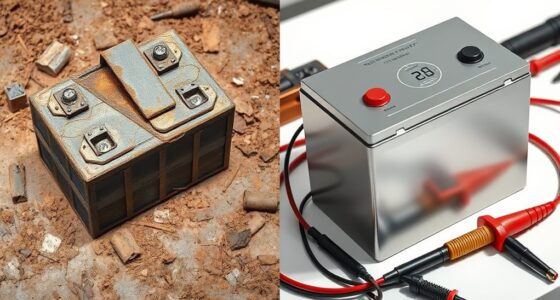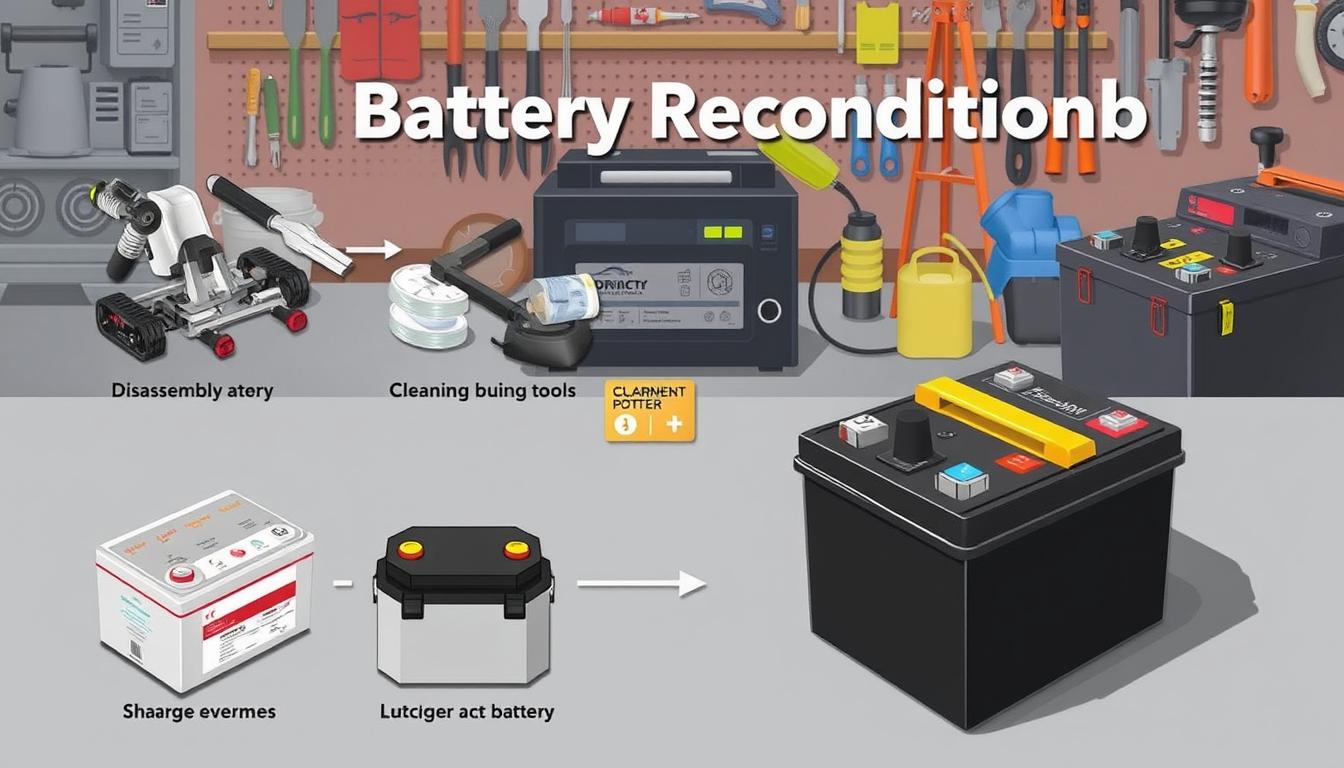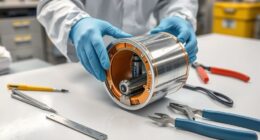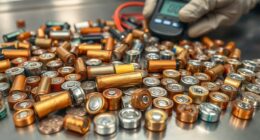Many myths about battery reconditioning waste your time and can even damage your batteries. Common misconceptions, like quick fixes or home remedies, often don’t work and can harm battery health. Trying to fully discharge lithium-ion batteries or using unsafe charging methods can worsen degradation or pose safety risks. To avoid wasting effort and risking damage, it’s essential to understand proper techniques and realistic expectations. Keep exploring, and you’ll discover ways to recondition safely and effectively.
Key Takeaways
- Quick fixes or miracle cures often do not work and can cause further battery damage.
- Fully discharging lithium-ion batteries before recharging can accelerate degradation.
- Home remedies and unproven methods are unreliable and may harm battery components.
- Reconditioning has limits; severely degraded batteries are often beyond safe repair.
- Relying on myths instead of proper techniques can waste time and increase safety risks.
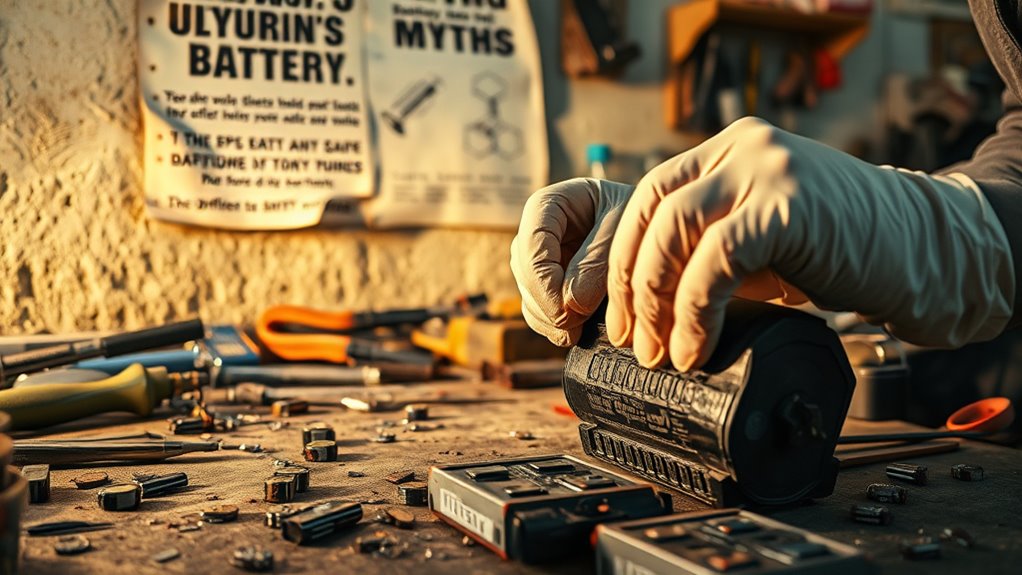
Have you ever wondered if reconditioning your equipment or materials is worth the effort? Many believe that restoring batteries or other items can save money and extend their usefulness, but there are plenty of myths that can lead you astray. One common misconception is that simply charging a battery repeatedly or using certain “miracle” techniques will instantly restore its full capacity. In reality, these methods often do more harm than good, especially if you don’t understand the fundamentals of battery lifespan and proper charging techniques.
Reconditioning isn’t a magic fix; it’s a careful process that involves understanding how batteries degrade over time. Batteries lose capacity because of chemical changes inside that reduce their ability to hold a charge. People often assume that a battery just needs a quick fix—like a deep charge or a quick recharge—to regain its original power. But this isn’t true. Using improper charging techniques, such as overcharging or fast-charging without proper equipment, can accelerate deterioration instead of halting it. Over time, this damages the internal components and shortens the overall lifespan of the battery, making reconditioning attempts ineffective or even dangerous.
Many myths suggest that you can simply “zap” a battery back to life with home remedies or unconventional methods. These stories spread quickly, but they’re misleading. Reconditioning involves understanding the specific type of battery you’re dealing with—be it lithium-ion, lead-acid, or NiMH—and applying the appropriate techniques. For example, some might think that fully discharging a battery before recharging can restore capacity, but this can actually harm the battery more, especially for lithium-ion batteries, which are sensitive to deep discharges. Instead, proper charging techniques involve maintaining the correct voltage and current levels to optimize battery lifespan without risking damage.
Another misconception is that all batteries can be reconditioned indefinitely. This is false; every battery has a finite number of charge cycles. Reconditioning can extend the usable life, but it doesn’t make batteries last forever. Attempting to recondition a severely degraded battery can be pointless or dangerous. The key is to recognize when reconditioning is appropriate and when it’s time to replace the battery entirely.
In short, understanding the real science behind battery technology and charging techniques is essential. Don’t fall for quick fixes or unproven methods that promise to revive an old battery overnight. Instead, focus on proper maintenance, correct charging practices, and realistic expectations about battery lifespan. That way, you’ll avoid wasting time and risking damage to your equipment, ensuring safer and more reliable performance in the long run. Recognizing proper reconditioning methods can help you make informed decisions without causing harm to your batteries or devices.
Frequently Asked Questions
Can All Batteries Be Successfully Reconditioned?
Not all batteries can be successfully reconditioned because battery chemistry varies widely, impacting how well they respond to reconditioning. Some types, like lead-acid or NiMH, often respond better, while others, such as lithium-ion, tend to be more challenging. Proper recycling procedures are essential for safe disposal when reconditioning isn’t possible. Always assess the specific battery chemistry before attempting reconditioning to avoid waste and guarantee safety.
Is Reconditioning Battery Health Permanent or Temporary?
Reconditioning can temporarily improve your battery’s health, but the impact on battery lifespan isn’t permanent. You might see a boost in performance initially, but over time, the effects diminish as the battery continues to age. It’s essential to understand that reconditioning mainly restores capacity temporarily, so you shouldn’t expect long-term results. Regular maintenance can extend the battery’s lifespan, but eventually, replacement becomes necessary for sustained performance.
Are DIY Reconditioning Methods Safe for Beginners?
You might wonder if DIY reconditioning methods are safe for beginners. If you take proper safety precautions and use the right tools, it can be safe. Always wear protective gear and work in a well-ventilated area. Follow step-by-step instructions carefully, and don’t rush. With patience and attention to safety precautions, you can recondition batteries effectively without risking injury or damage.
How Do I Tell if a Battery Is Beyond Repair?
Imagine holding a battery that no longer holds a charge—that’s a clear sign it’s beyond repair. You can’t restore its lifespan once repair limitations are reached. If your battery shows persistent issues like rapid drainage, corrosion, or physical damage, it’s likely beyond salvage. Don’t waste time trying to fix a worn-out battery; instead, replace it to guarantee safety and peak performance.
What Are the Signs of Dangerous Battery Reconditioning Attempts?
If you’re reconditioning a battery, watch for signs of danger. Excessive swelling, leaking battery acid, or strange smells indicate a risky attempt. Always perform voltage testing carefully; if the voltage remains dangerously low after reconditioning, it’s not safe to use. Never ignore these warning signs—disregarding them can lead to acid leaks, fires, or explosions. Safety should always come first during any battery reconditioning process.
Conclusion
Don’t let the myths trap you like false maps leading you astray. Instead, see reconditioning as tending to a garden—carefully nurturing your batteries with knowledge and patience. When you ignore the weeds of misinformation, your efforts bloom into reliable power again. Clear away the debris of misconceptions, and you’ll find yourself with a thriving, rejuvenated battery, ready to serve. Embrace the truth, and watch your energy garden flourish, saving time, money, and frustration along the way.

